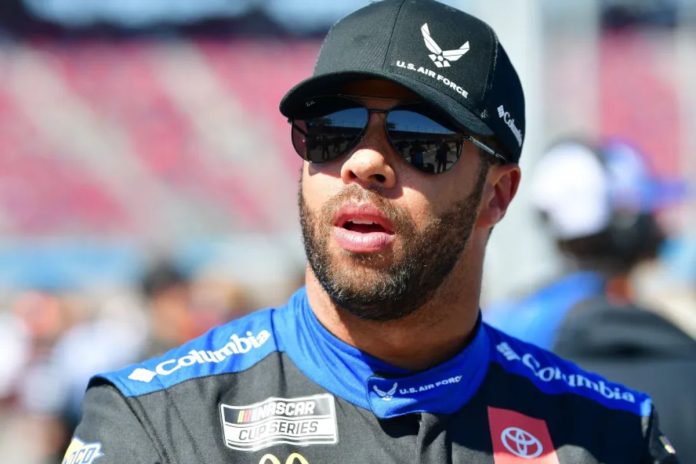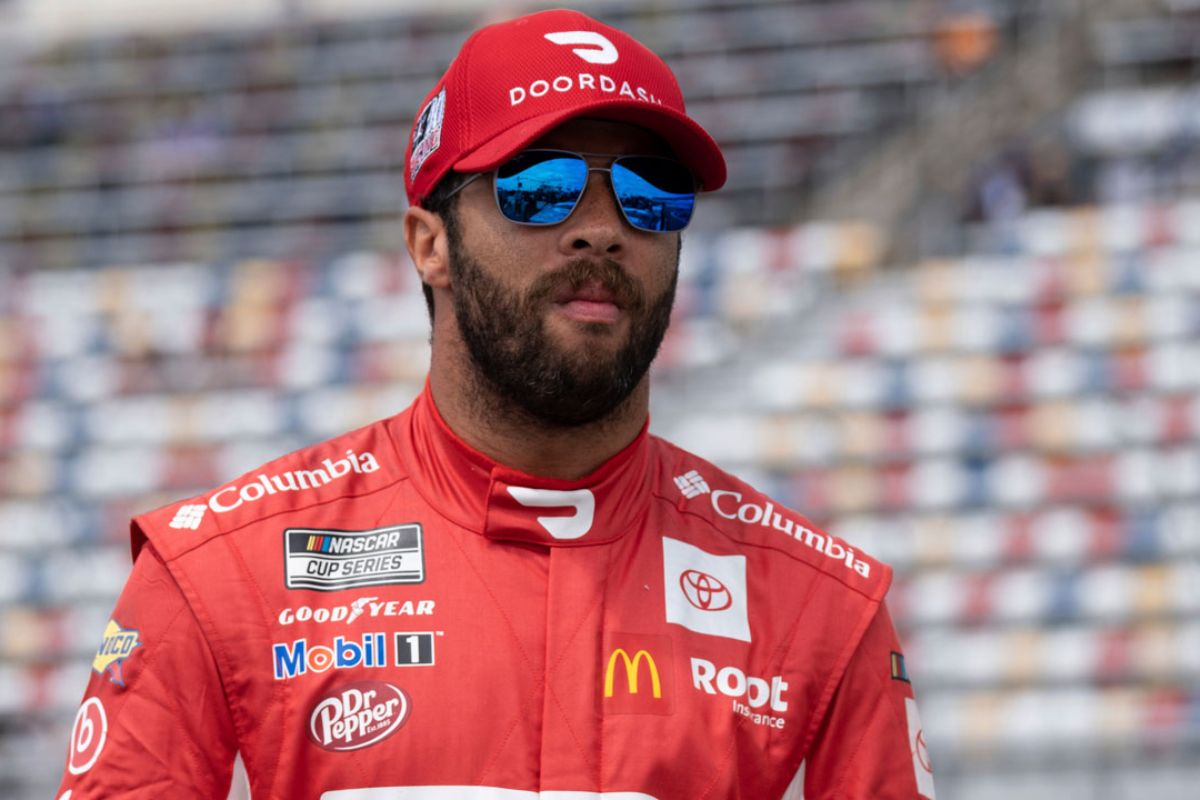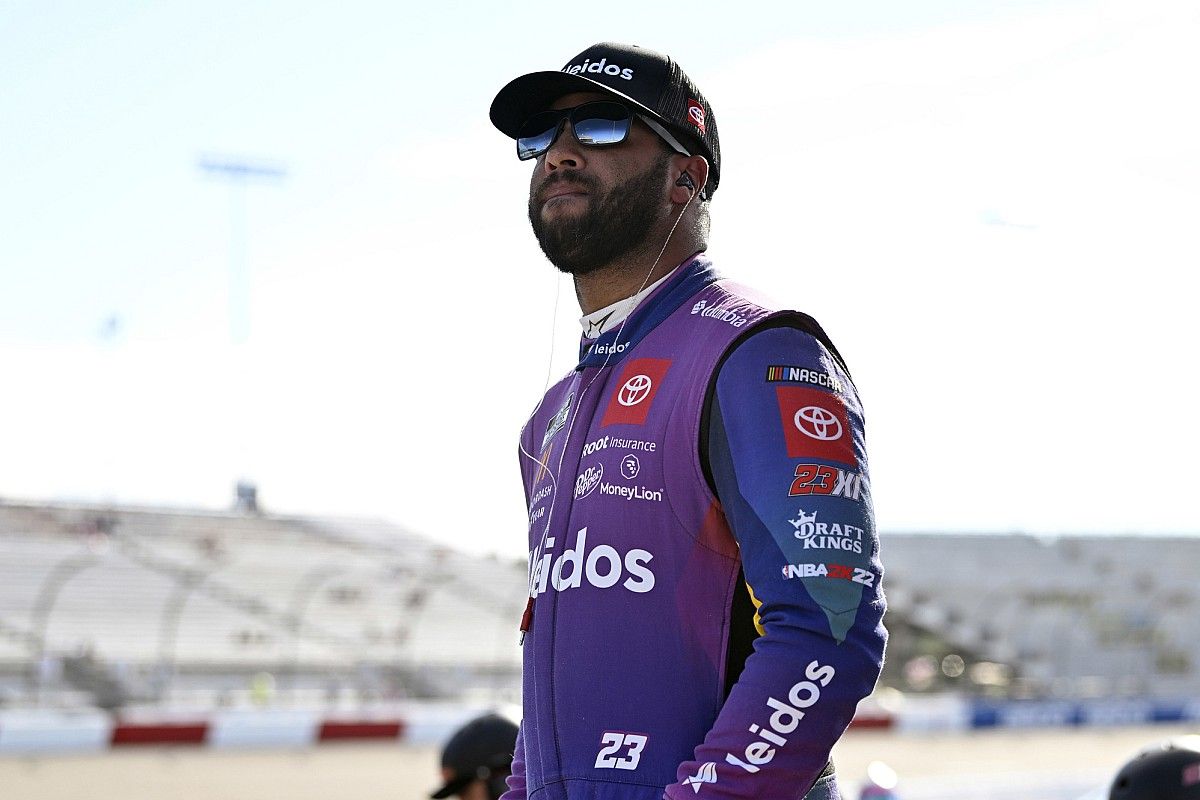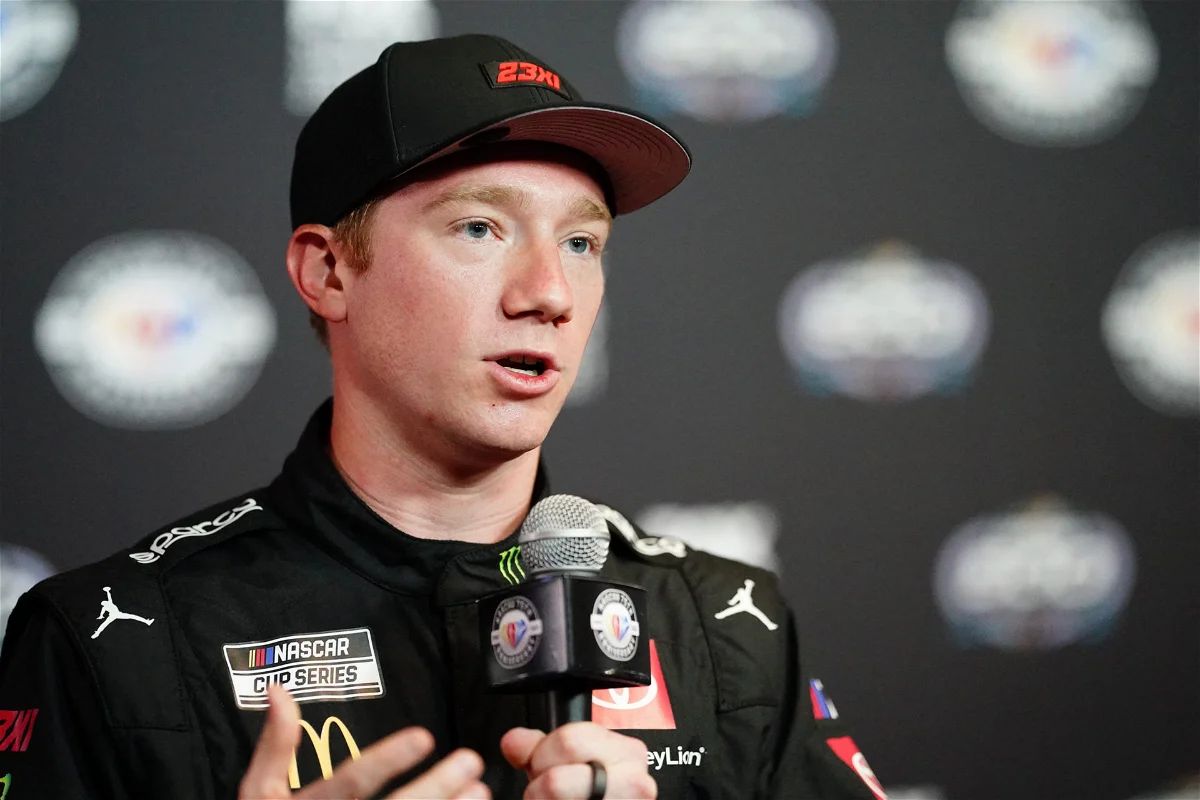Bubba Wallace’s Frustration: The recent debacle at Talladega, which saw Toyota’s tactical approach unravel precipitously, casts a spotlight not only on the mechanical and strategic elements of NASCAR but also on the psychological resilience of its drivers. Bubba Wallace’s reaction to the incident on lap 157, where his vexation was audibly evident over the team’s radio, opens up a broader discussion on the immense stresses that drivers face in high-stakes motorsports. This incident, crucial in its timing and impact, not only compromised Wallace’s position but also exposed potential vulnerabilities in Toyota’s racing strategy.
Key Takeaways
- Wallace’s frustration stemmed from Toyota’s disrupted strategy during the Talladega race.
- His frustration was vocalized on team radio, highlighting intense emotional responses.
- The crash on lap 157 exacerbated Wallace’s frustration due to its impact on team strategy.
- Toyota’s planned aerodynamic alignment was interrupted, leading to Wallace’s and the team’s setbacks.
- Emotional toll from the unpredictability of racing was evident in Wallace’s reaction post-crash.
Toyota’s Strategy at Talladega
At the tri-oval Talladega track, Toyota employed a meticulous yet ultimately flawed strategy, aiming to dominate the race but facing unexpected setbacks. The team had been closely tailing Chevrolet in the season’s standings, demonstrating a level of strategic expertise that positioned them as formidable contenders. Toyota’s approach at Talladega was designed to consolidate this progress, leveraging individual skill of their drivers and the collective strength of their race-day tactics.
The strategy depended on precision and timing, with an emphasis on maintaining strong pack dynamics and strategic pitting. This approach required not only flawless execution from the drivers but also perfect coordination among the pit crews and spotters. The focus was on optimizing every lap, every turn, and every pit stop to enhance performance and minimize time lost.
However, the reality of racing at Talladega, with its notorious unpredictability and high-speed dynamics, posed significant challenges. The intricate plan, while sound in theory, proved vulnerable to the chaotic nature of superspeedway racing. Other teams’ tactics, unexpected mechanical issues, and the sheer volatility of pack racing dynamics disrupted Toyota’s execution.
Despite these setbacks, the strategy did yield some success, especially with Tyler Reddick securing a win that added an important victory to Toyota’s season tally.
Ford’s Early Lead and Toyota’s Plan
Despite Ford’s early dominance in the GEICO 500, Toyota carefully orchestrated a strategic comeback, aligning seven cars in a formidable pursuit before an unforeseen track incident disrupted their efforts. The race, characterized by intense speeds and strategic positioning, saw Ford’s vehicles setting a blistering pace initially. However, Toyota’s tactical response was both swift and structured, aimed at leveraging the aerodynamic drafting benefits of a tight lineup.
Toyota’s strategy was not merely about speed but also about the synchronized movement of their vehicles, a confirmation of their meticulous planning and execution. The alignment of seven Toyotas was a calculated move, designed to cut through air resistance more efficiently and conserve fuel, essential in the latter stages of the race. This approach often provides both competitive speed and strategic depth, giving teams a tactical edge.
However, the momentum built by this strategic alignment was abruptly halted by a mishap on the track. The incident, which involved multiple vehicles, had a particularly detrimental impact on Toyota’s lineup, effectively dismantling their structured game plan.
Bubba Wallace’s Reaction
Bubba Wallace’s reaction to the disastrous turn of events at Talladega was captured vividly on the team’s radio, revealing his mounting frustration as Toyota’s strategy unraveled. The snippets from the radio communication showed Wallace grappling with a rapidly deteriorating situation, his tone oscillating between disbelief and irritation as the race progressed. This captured audio offers a raw insight into the psyche of a driver in the throes of a race where strategic misalignments are unfolding live.
Wallace’s responses highlighted not just his own concerns but also illuminated the broader implications for the Toyota team. His dialogue was peppered with tactical inquiries and urgent requests for updates, highlighting his active engagement in the team’s strategy. It was evident that Wallace was not merely a participant but a critical stakeholder in the decision-making process, reflecting a driver deeply integrated into the fabric of the team’s dynamics.
The Crash and Frustration
The situation at Talladega took a dramatic turn for the worse when Erik Jones’ car lost control and set off a devastating chain reaction that involved Bubba Wallace and Denny Hamlin. This incident exemplified the volatile nature of motorsport, where strategic calculations can be obliterated in a split moment due to unforeseen variables on the track.
- Track Conditions: The bump over the tunnel under turn 3 is a known hazard at Talladega. It requires precise vehicular control and coordination among drivers, which can falter even under slight miscalculations.
- Driver Interactions: Wallace’s minor tap on Jones’s rear, although seemingly inconsequential, was enough to destabilize Jones’s No. 43 car. This points to the delicate balance of aerodynamics and physical contact in NASCAR racing.
- Team Dynamics: The frustration expressed by Wallace and his crew chief post-crash emphasizes the significant risks involved. Their radio communications revealed not just disappointment but a tangible dissolution of pre-race strategies which were carefully planned.
Wallace’s outburst, “Got shoved into him. F*** the plans. I’m done,” represents more than just momentary anger. It reflects a broader sentiment of unpredictability inherent in the sport, which can often render even the most thorough preparations moot.
Reddick’s Victory and Toyota’s Strategy
Navigating through the chaos, Tyler Reddick and his Toyota teammates capitalized on the lap 157 wreck, shrewdly avoiding the turmoil to seize control and eventually lead the race. This precise navigation was not merely a stroke of luck but a testament to their strategic skills and situational awareness. As competitors were ensnared by the crash, Reddick, Martin Truex Jr., and Ty Gibbs demonstrated remarkable foresight and discipline, ensuring their positions at the front of the pack were secured as the race resumed.
This crucial moment was underpinned by a broader strategic framework that Toyota teams often execute with precision. The ability to avoid incidents, coupled with well-timed decisions on when to pit, is ingrained in their racing philosophy. The wreck provided an unforeseen opportunity to capitalize on their strengths in racecraft and strategic pitting. As other teams grappled with damage and disarray, the Toyota contingent adeptly navigated through the emerging race dynamics, aligning their track positions with strategic pit stop strategy.
News in Brief: Bubba Wallace’s Frustration
The incident at Talladega greatly highlights the unpredictability inherent in NASCAR racing. Strategic planning by teams like Toyota can be suddenly derailed by unforeseen events. Wallace’s reaction emphasizes the intense psychological strain drivers endure, balancing meticulous strategies against the chaotic dynamics of race conditions.
This episode not only demonstrates the immense risks in motorsport but also the crucial importance of adaptability and mental resilience within it, necessary for maneuvering the complexities of competitive racing.
Our Reader’s Queries
Q. Did Bubba Wallace lose his sponsor?
A. Following his performance in the race and subsequent comments on social media, a sponsor of Wallace opted to sever ties with the driver amid the challenging landscape of quarantine life.
Q. What did Dustin Skinner say about Bubba Wallace?
A. Skinner’s racially charged comments targeting Bubba Wallace Jr. expressed a disturbing sentiment regarding the incident involving a noose left at Wallace’s car. Such inflammatory language underscores the gravity of the situation and its impact on the sport many have cherished for decades.
Q. Why is Bubba Wallace important?
A. As the sole Black driver in the NASCAR Cup Series, Wallace occupies a pivotal role in the sport’s history. His full-time entry in the top-tier series marks a significant milestone, echoing the groundbreaking achievements of Wendell Scott back in 1971. In 2021, Wallace’s historic victory not only solidified his place in racing lore but also honored the legacy of Scott, making him the first Black driver to clinch a Cup Series race since Scott’s own triumph.
Q. Did Michael Jordan punish Bubba Wallace?
A. Michael Jordan, known for his unparalleled success in basketball, found himself in a position of authority when addressing Bubba Wallace’s fallout from the Kyle Larson incident. However, it’s worth noting that even sporting icons like Jordan have faced their own moments of controversy. In 1993, Jordan’s suspension for an altercation with an NBA legend serves as a reminder of the complexities within the world of sports.
ALSO READ: Bubba Wallace’s Bond with Crew Chief: The Inside Story





